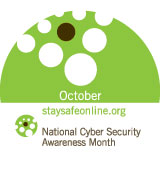Two
new versions of the scheme began appearing in July 2008.
One instructed the recipient to contact a telephone number contained in the e-mail and the other claimed the recipient or a "loved one" was going to be kidnapped unless a ransom was paid. Recipients of the kidnapping threat were told to respond via e-mail within 48 hours. The sender was to provide the location of the wire transfer five minutes before the deadline and was threatened with bodily harm if the ransom was not received within 30 minutes of the time frame given. The recipients' personally identifiable information was included in the e-mail to promote the appearance that the sender actually knew the recipient and their location.
Perpetrators of Internet crimes often use fictitious names, addresses, telephone numbers, and threats or warnings regarding the failure to comply to further their schemes.
In
some instances, the use of names, titles, addresses, and telephone
numbers of government officials and business executives, and/or the
victims personal identifying information are used in an attempt to make the fraud appear more
authentic.
Consumers always need to be alert to unsolicited e-mails. Do not open unsolicited e-mails or click on any embedded links, as they may contain viruses or malware. Providing your personal identifiable information (PII) will compromise your identity!
Individuals who receive e-mails containing threats of violence and their PII are encouraged to contact law enforcement as well as file a complaint at www.ic3.gov.
Source: F.B.I Cyber Investigations

 NEWSLETTER SIGN UP
NEWSLETTER SIGN UP SUBSCRIBE
SUBSCRIBE CONTACT
CONTACT

















Leave a comment